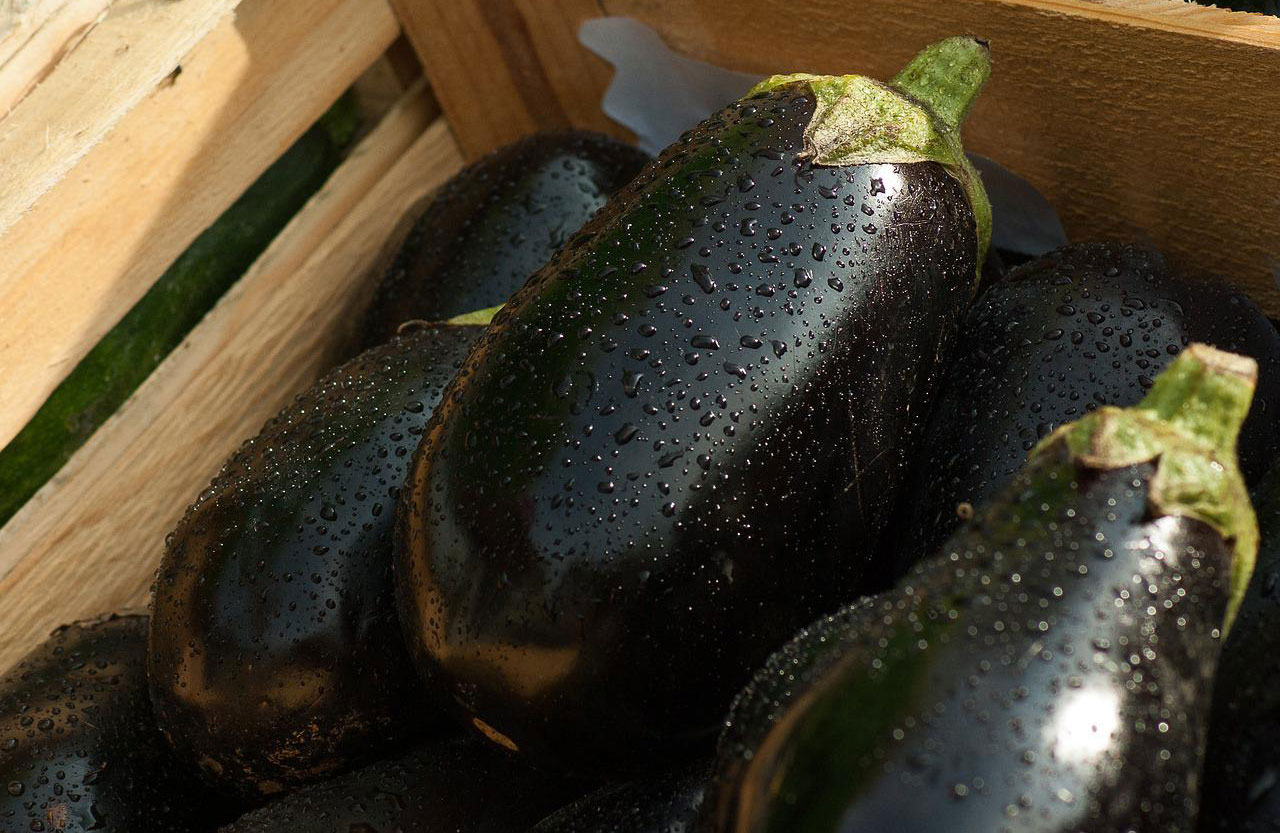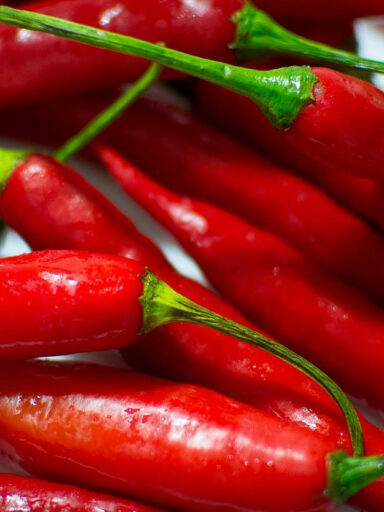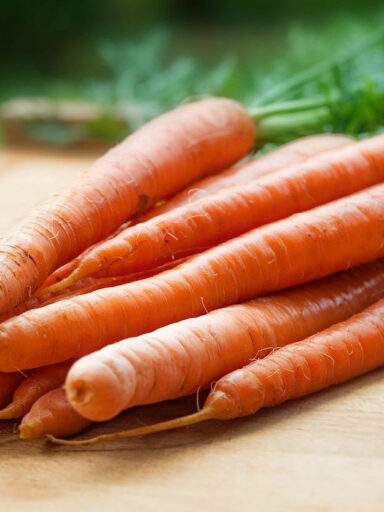Eggplant is also known as brinjal in South Africa, South Asia, and Southeast Asia regions. In Europe, it is more commonly known using the French term aubergine.
This plant is a variety of the nightshade plant and the term eggplant is more commonly referring to the edible savory fruit of the same plant. It is more closely related to the potato and the tomato.
It grows to about half a meter to one and a half meters in height with a spiny stem. Depending on the shape the eggplant can be shaped like an egg or a courgette reaching a length of up to 30 centimeters. The color of the fruit is deep purple, white or deep blue depending on the variety. It comes with a white fleshy pulp that turns brown to black when cut and exposed to air.
It is a perennial crop that is native to the South Asia region. It grows best in temperate climates and blossoms to white to purple flowers with five lobs and yellow stamens.
Fresh and mature eggplant should be formed to the grip with smooth and glossy skin. The fruit is available all year round in the marketplaces. When purchasing aubergine, select those that are bright in color and bear no blemishes or bruises. There should also be no mold or it should not feel mushy or slimy in any way. The skin should also not be pale or wrinkled.
Preparation of Eggplant for Eating
The eggplant should be washed thoroughly in cold running water to remove dirt and soil particles as well as any pesticide and fungicide residue. The stem can then be cut off or broken off from the fruit.
The entire fruit is edible and therefore can be cut up with a sharp knife according to instructions in the recipe. The fruit should be soaked in cold water immediately after cutting to prevent the flesh from turning brown. Generally, it can be prepared in several methods including left whole, halved, or quartered. You can also slice, cube, or dice it as you see fit.
It is used in vegetable stew and sauce preparations, salad, and appetizer dishes as well. It can be prepared as part of a casserole, as an hors-d’oeuvre or it can be prepared on its own as a vegetable accompaniment or snack.
To cook eggplant, you have several options. You can boil, steam, and bake the aubergines. You can also grill, roast stew, or fry this fruit all the same.
It is usually served well savory or well-spiced, especially in South Asian cuisine. Popular eggplant dishes include baba ghanoush (mashed eggplant) from Asia, mousaka or eggplant casserole, and imam bayildi (stuffed aubergine) among others.
Nutritional Benefits of Aubergines
Eggplant is rich in soluble dietary fiber and contains no sodium or cholesterol and trace amounts of fat. It provides just 2 calories per 100 grams of fruit. It contains good amounts of B complex vitamins and some minerals.
It is considered a good source of folates, niacin, and pantothenic acid. It is also a source of pyridoxine. It has lesser amounts of riboflavin and thiamin as well as vitamin C and vitamin K.
It is a good source of manganese and copper and can also be used to gain some iron and magnesium in your diet.




